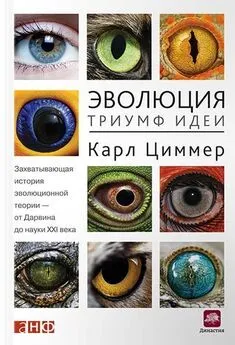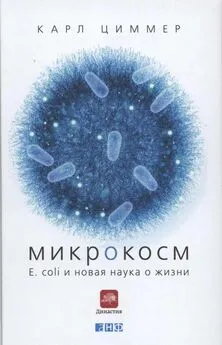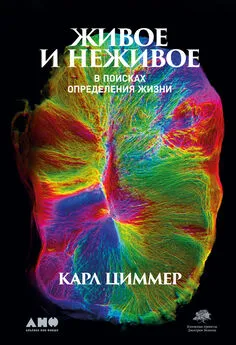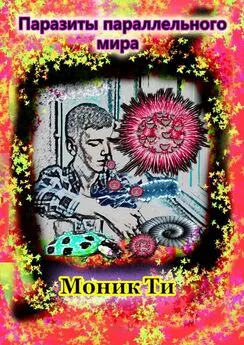Карл Циммер - Паразиты: Тайный мир
- Название:Паразиты: Тайный мир
- Автор:
- Жанр:
- Издательство:Альпина нон-фикшн
- Год:2011
- ISBN:978-5-91671-081-6
- Рейтинг:
- Избранное:Добавить в избранное
-
Отзывы:
-
Ваша оценка:
Карл Циммер - Паразиты: Тайный мир краткое содержание
ПРЕДСТАВЬТЕ СЕБЕ МИР, где паразиты контролируют сознание своих хозяев, отправляя их на смерть.
ПРЕДСТАВЬТЕ СЕБЕ МИР, где паразиты мастерски применяют химическое оружие и маскируются, прикрываясь молекулами собственного хозяина.
ПРЕДСТАВЬТЕ СЕБЕ МИР, где паразиты задают направление эволюции и большинство видов ведет паразитический образ жизни.
ПРЕДСТАВИЛИ? Добро пожаловать на Землю!
Много сотен лет паразиты жили в ночных кошмарах, ужастиках и темных закоулках науки. Тем не менее эти существа относятся к самым успешным и изощренным организмам на свете. Искусно лавируя среди научных данных с их отвратительными подробностями, Карл Циммер сопровождает нас в фантастическом путешествии. Перенося читателя из влажных джунглей Коста-Рики в Южный Судан — рай для паразитов, Циммер показывает, как паразиты могут изменить ДНК, «перекоммутировать» мозг, сделать мужчин более недоверчивыми, а женщин более общительными и превратить хозяина в живой труп. Эта основательная и прекрасно написанная книга выводит паразитов на чистую воду и рассказывает, чему они, владея самыми базовыми техниками выживания в нашем мире, могут научить нас.
Люди просто не догадываются о том, как сложен и причудлив мир паразитов — опаснейших созданий природы, живущих за счет других, и насколько велика их роль в нашей жизни. Они питаются плотью и кровью своих жертв, влияют на биологическое и социальное поведение целых видов, на численность популяции и направляют в конечном счете эволюцию флоры и фауны. В мире, где каждый кормит своего паразита, порой даже трудно провести грань между им и его жертвой. Нужно ли уничтожать всех паразитов или они — необходимый элемент экологической системы? Карл Циммер, один из лучших научных журналистов нашего времени, делает доступными самые сложные научные теории и описывает жизнь паразитов, как фантастический роман с непостижимыми, зловещими, а порой вызывающими сопереживание героями.
«Удовольствие от начала до конца. Циммер — великолепный автор, который в полной мере использует жуткую естественную историю паразитов»
Марк Ридли, The New Scientist
«Книга «Паразиты» показывет, что Циммер принадлежит к лучшим научным журналистам нашего времени»
Кевин Падиан, The New York Times
Паразиты: Тайный мир - читать онлайн бесплатно ознакомительный отрывок
Интервал:
Закладка:
Karban, R., and G. English-Loeb. 1997. Tachinid parasitoids affect host plant choice by caterpillars to increase caterpillar survival. Ecology 78:603–611.
Katz, L. A. 1998. Changing perspectives on the origin of eukaryotes. Trends in Ecology and Evolution 13:493–497.
Kavaliers, M., and D. Colwell. 1995a. Discrimination by female mice between the odors of parasitized and non-parasitized males. Proceedings of the Royal Society of London B 261:31–35.
_____. 1995b. Odors of parasitized males induce aversive responses in female mice. Animal Behavior 50:1161–1169.
Kawecki, T. J. 1998. Red Queen meets Santa Rosalia: Arms races and the evolution of host specification in organisms with parasitic lifestyles. American Naturalist 152:635–651.
Kazazian, H. H., and J. V. Moran. 1998. The impact of L1 retrotransposons on the human genome. Nature Genetics 19:19–24.
Kelley, W. E., and J. E. Atz. 1964. A pygidiid catfish that can suck blood from goldfish. Copeia (4):702–704.
Kennedy, C. R., and J. F. Guegan. 1996. The number of niches in intestinal helminth communities of Anguilla anguilla: Are there enough spaces for parasites? Parasitology 113:293–302.
Kilner, R. M., D. G. Noble, and N. B. Davies. 1999. Signals of need in parent-offspring communication and their exploitation by the common cuckoo. Nature 397:667–672.
Knoll, A. H., and S. B. Carroll. 1999. Early animal evolution: Emerging views from comparative biology and geology. Science 284:2129–2137.
Koella, J. C. 1999. An evolutionary view of the interactions between anopheline mosquitoes and malaria parasites. Microbes and Infection 1:303–308.
_____, P. Agnew, and Y. Michalakis. 1998a. Coevolutionary interactions between host life histories and parasite life cycles. Parasitology 116:S47–S55.
_____, F. L. Sorensen, and R. A. Anderson. 1998b. The malaria parasite, Plasmodium falciparum, increases the frequency of multiple feeding of its mosqutio vector, Anopheles gambiae. Proceedings of the Royal Society of London B 265:763–768.
Koga, M., A. Ning, and I. Tada. 1999. Strongyloides ratti: Migration study of third-stage larvae in rats by whole-body autoradiography after S-methinonine labeling. Journal of Parasitology 85:405–409.
Kohler, S., C. F. Delwiche, P. W. Denny, L. G. Tilney, P. Webster, R. J. M. Wilson, J. D. Palmer, and D. S. Roos. 1997. A plastid of probably green algal origin in apicomplexan parasites. Science 275:1485–1488.
Kraaijeveld, A. R., J. J. M. Van Alphen, and H. C. J. Godfray. 1998. The coevolution of host resistance and parasitoid virulence. Parasitology 116(Supplement):S29–S45.
Krasnoff, S. B., D. W. Watson, D. M. Gibson, and E. C. Kwan. 1995. Behavioral effects of the entomopathogenic fungus Entomophthora muscae on its host Musca domestica: Postural changes in dying hosts and gated patterns of mortality. Journal of Insect Physiology 41(10):895–903.
Kuris, A. M., and K. D. Lafferty. 1994. Community structure: Larval trematodes in snail hosts. Annual Review of Ecology and Systematics 25:189–217.
Kyriazakis, I., B. J. Tolkamp, and M. R. Hutchings. 1998. Toward a functional explanation for the occurrence of anorexia during parasitic infections. Animal Behavior 56:265–274.
Lafferty, K. D. 1992. Foraging on prey that are modified by parasites. American Naturalist 140:854–867.
_____. 1993a. Effects of parasitic castration on growth, reproduction and population dynamics of the marine snail Cerithidea californica. Marine Ecology Progress Series 96:229–237.
_____. 1993b. The marine snail, Cerithidea californica, matures at smaller sizes where parasitism is high. Oikos 68:3–11.
_____. 1997a. The ecology of parasites in a salt marsh ecosystem. In Parasites and pathogens: Effects on host hormones and behavior, edited by N. E. Beckage. New York: Chapman & Hall.
_____. 1997b. Environmental parasitology: What can parasites tell us about human impacts on the environment? Parasitology Today 13:251–255.
_____, and A. M. Kuris. 1996. Biological control of marine pests. Ecology 77(7):1989–2000.
_____, and K. Morris. 1996. Altered behavior of parasitized killifish increases susceptibility to predation by bird final hosts. Ecology 77(5):1390–1397.
Lankester, E. R. 1890. Degeneration: A chapter in Darwinism. In The advancement of science: Occasional essays and addresses. London: Macmillan.
Lauer, S. A., P. K. Rathod, N. Ghori, and K. Haldar. 1997. A membrane network for nutrient import in red cells infected with the malaria parasite. Science 276:1122–1125.
Lavine, M. D., and N. E. Beckage. 1996. Temporal pattern of parasitism-induced immunosuppression in Manduca sexta. Journal of Insect Physiology 42(1):41–51.
Law, R. 1998. Symbiosis through exploitation and the merger of lineages in evolution. Proceedings of the Royal Society of London B 265:1245–1253.
Leptak, C. L., and J. H. McKerrow. 1997. Schistosome egg granulomas and hepatic expression of TNF-? are dependents on immune priming during parasite maturation. Journal of Immunology 158:301–307.
Lester, J. E. 1995. E. Ray Lankester and the making of modern British biology, edited by P. J. Bowler. London: British Society for the History of Science Monographs.
Lively, C. M. 1987. Evidence from a New Zealand snail for the maintenance of sex by parasitism. Nature 328:519–521.
_____. 1996. Host-parasite coevolution and sex: Do interactions between biological enemies maintain genetic variation and cross-fertilization? BioScience 46(2):107–114.
LoBue, C. P., and M. A. Bell. 1993. Phenotypic manipulation by the cestode parasite Schistocephalus solidus of its intermediate host, Gasterosteus aculeatus, the threespine stickleback. American Naturalist 142:725–735.
Locksley, R. M., and S. L. Reiner. 1995. Murine leishmaniasis and the regulation of CD4+ cell development. In Molecular approaches to parasitology, edited by J. C. Boothroyd and R. Komuniecki. New York: Wiley-Liss.
Lorenz, K. 1989. The waning of humaneness. Translated by Robert Warren Kickert. Boston: Little, Brown and Co.
Low, B. S. 1990. Marriage systems and pathogen stress in human behavior. American Zoologist 30:325–339.
Lutzen, J., and J. T. Høeg. 1995. Spermatogonia implantation by antennular penetrations in the akentrodonid rhizocephalan Diplothylacus sinensis (Keppen, 1877) (Crustacea: Cirripedia ). Zoologischer Anzeiger 234:201–207.
Lynch, N., I. A. Hagel, M. Palenque, and M. C. DiPrisco. 1998. Relationship between helminithic infection and IgE response in atopic and nonatopic children in a tropical environment. Journal of Allergy and Clinical Immunology 101:217–221.
Lythgoe, K. A., and A. F. Read. 1998. Catching the Red Queen? The advice of the rose. Trends in Ecology and Evolution 13:473–474.
MacDonald, J. F. 1995. Transposable elements: Possible catalysts of organismic evolution. Trends in Ecology and Evolution 10:123–126.
Marcogliese, D. J., and D. K. Cone. 1997. Parasite communities as indicators of ecosystem stress. Parasitologia 39:227–232.
Margulis, L. 1998. Symbiotic planet: A new look at evolution. New York: Basic Books.
Maynard, B. J., L. DeMartini, and W. G. Wright. 1996. Gammarus lacustris harboring Polymorphus paradoxus show altered patterns of serotonin-like immunoreactivity. Journal of Parasitology 82:663–666.
Meredith, S. E. O., and H. B. Dull. 1998. Onchocerciasis: The first decade of mectizan treatment. Parasitology Today 14:472–473.
Messier, F., M. E. Rau, and M. A. McNeill. 1989. Echinococcus granulosus (Cestoda: Taeniidae) infections and moose-wolf population dynamics in southwestern Quebec. Canadian Journal of Zoology 67:216–219.
Milinski, M. 1990. Parasites and host decision-making. In Parasitism and host behavior, edited by C. J. Barnard and J. M. Behnke. London: Taylor & Francis.
Miller, L. H. 1996. Protective selective pressure. Nature 383:480–481.
Minchella, D. J. 1985. Host life-history variation in response to parasitism. Parasitology 90:205–216.
Møller, A. P. 1993. A fungus infecting domestic flies manipulates sexual behavior. Behavioral Ecology and Sociobiology 33:403–407.
_____. 1999. Parasitism, host immune function, and sexual selection. Quarterly Review of Biology 74:3–20.
Moore, J. 1983. Response to an avian predator and its isopod prey to an acanthocephalan parasite. Ecology 64(5):1000–1015.
_____. 1995. The behavior of parasitized animals. BioScience 45(2):89–98.
_____, and N. J. Gotelli. 1996. Evolutionary patterns of altered behavior and susceptibility in parasitized hosts. Evolution 50(2):807–819.
Mooring, M. S., and B. L. Hart. 1992. Animal grouping for protection from parasites: selfish herd and encounter-dilution effects. Behavior 123:173–193.
Morell, V. 1999. Are pathogens felling frogs? Science 284:728–731.
Muller, C. B., and P. Schmid-Hempel. 1993. Exploitation of cold temperature as defense against parasitoids in bumblebees. Nature 363:65–67.
Muller, M., and W. Martin. 1999. The genome of Rickettsia prowazekii and some thoughts on the origin of mitochondria and hydrogenosomes. BioEssays, 21:377–381.
Naitza, S., F. Spano, K. J. H. Robson, and A. Cristranti. 1998. The thrombospondin-related protein family of apicomplexan parasites: The gears of the cell invasion machinery. Parasitology Today 14:479–484.
Nelson, G. S. 1990. Human behavior and the epidemiology of helminth infections: Cultural practices and microepidemiology. In Parasitism and host behavior, edited by C. J. Barnard and J. M. Behnke. London: Taylor & Francis.
Newman, A. 1999. In pursuit of an autoimmune worm cure. The New York Times, August 31, 1999, 5.
Niebel, A., G. Gheysen, and M. Van Montagu. 1994. Plant-cyst nematode and plant-root-knot nematode interactions. Parasitology Today 10(11):424–430.
Nokes, C., S. M. Grantham-McGregor, A. W. Sawyer, E. S. Cooper, B. A. Robinson, and D. A. P. Bundy. 1992. Moderate to heavy infections of Trichuris trichiura affect cognitive function in Jamaican school children. Parasitology 104:539–547.
O'Brien, J., and D. M. Skinner. 1990. Overriding of the molt-inducing stimulus of multiple limb autotomy in the mud crab Rhithropanopeus harrisii by parasitization with a rhizocephalan. Journal of Crustacean Biology 10(3):440–445.
_____, and P. Van Wyk. 1986. Effects of crustacean parasitic castrators (epicaridean isopods and rhizocephalan barnacles) on growth of crustacean hosts. In Crustacean Issues 3, edited by A. Wenner.
Penn, D., and W. K. Potts. 1998. Chemical signals and parasite-mediated sexual selection. Trends in Ecology and Evolution 13:391–396.
Pennisi, E. 1998. A genomic battle of the sexes. Science 281:1984–1985.
Peries, H., and S. Cairncross. 1997. Global eradication of guinea worm. Parasitology Today 13(11):431–437.
Poirier, S. R., M. E. Rau, and X. Wang. 1995. Diel locomotor activity of deer mice ( Peromyscus maniculatus ) infected with Trichinella nativa or Trichinella pseudospiralis. Canadian Journal of Zoology 73:1323–1334.
Читать дальшеИнтервал:
Закладка:
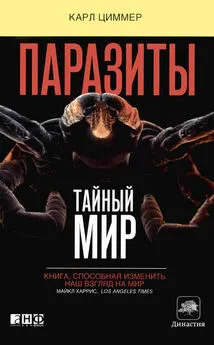
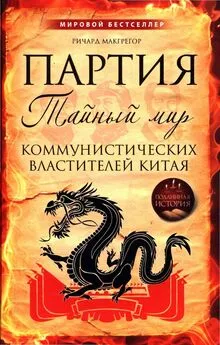
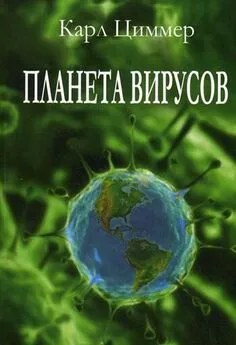
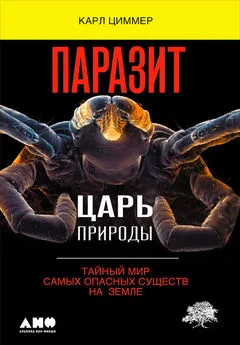
![Карл Циммер - Паразит – царь природы [Тайный мир самых опасных существ на Земле] [litres]](/books/1067054/karl-cimmer-parazit-car-prirody-tajnyj-mir-sam.webp)
![Карл Циммер - Она смеется, как мать [Могущество и причуды наследственности] [litres]](/books/1075049/karl-cimmer-ona-smeetsya-kak-mat-moguchestvo-i-pr.webp)
